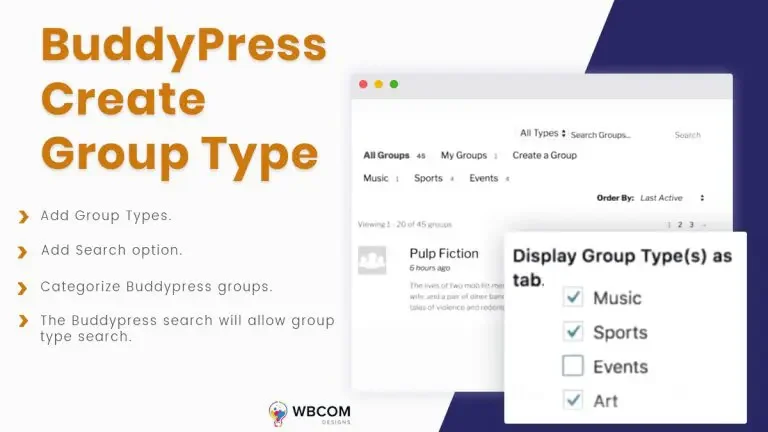Your sales page is your storefront in the fast-paced world of online courses. The virtual first impression determines whether or not your potential students will take the plunge and enroll in your course. But what makes a sales page genuinely irresistible? Is it the graphics, the copy, or something else entirely? In this blog post, we’ll explore the secrets of creating an irresistible sales page that captures your audience’s attention and compels them to hit the “buy now” button. So, if you’re ready to take your online course to the next level, let’s dive in!
Table of Contents
ToggleResearching your target audience | Creating an Irresistible Sales Page
Identifying your target audience is crucial to the success of any marketing campaign. Creating messaging that resonates with them is impossible without a clear understanding of your audience.
One of the first steps in researching your target audience is to identify who they are. This can be done by looking at demographics such as age, gender, income, and location. Once you have a clear picture of your audience, you can start to understand their pain points, needs, and desires.
Pain points are the challenges or problems that your target audience is facing. By understanding these pain points, you can tailor your messaging to address them directly and position your product or service as the solution.
Needs are the specific things that your target audience requires to solve their pain points. By understanding their needs, you can create a product or service that meets those needs and is more likely to resonate with your audience.
Desires are the wants or aspirations of your target audience. By understanding their desires, you can create messaging that speaks to their aspirations and positions your product or service as the way to achieve them.
Once you clearly understand your target audience’s pain points, needs, and desires, you can tailor your messaging to resonate with them. This involves using language, tone, and visuals that speak directly to your audience and position your product or service as the solution to their problems.
Crafting a compelling headline | Creating an Irresistible Sales Page
Crafting a compelling headline is one of the most critical aspects of creating content that captures your audience’s attention. Your headline is the first thing your audience sees, and it’s what determines whether or not they’ll continue reading.
The importance of a strong headline cannot be overstated. A good headline should be attention-grabbing, concise, and relevant to the following content. It should also pique the reader’s curiosity and give them a reason to keep reading.
Here are some tips for writing attention-grabbing headlines:
- Use numbers and statistics: Numbers and statistics are an effective way to grab your audience’s attention and communicate the value of your content.
- Ask a question: Asking a question in your headline can pique the reader’s curiosity and encourage them to keep reading to find the answer.
- Use strong verbs: Strong, action-oriented verbs can make your headline more compelling and give readers a sense of what they’ll gain by reading your content.
- Use emotional triggers: Emotional triggers such as fear, joy, or surprise can make your headline more memorable and increase the likelihood that the reader will engage with your content.
- Keep it concise: Your headline should be brief and to the point. Aim for no more than 10 words.
Writing persuasive copy
Writing persuasive copy is essential when promoting your online course. To effectively persuade potential students to enroll in your course, you need to create a compelling value proposition, highlight the benefits of your course, address possible objections and concerns, use social proof to build credibility and create a sense of urgency.
Crafting a solid value proposition involves communicating your course’s unique benefits and value to potential students. Your value proposition should be clear, concise, and focused on the primary use that your course offers. It should also be written from the perspective of your target audience and speak to their needs and desires.
Highlighting your course’s benefits involves explaining how it will help potential students achieve their goals and solve their problems. This can include outlining specific outcomes or results students can expect to achieve by taking your course.
Addressing potential objections and concerns involves anticipating the questions and concerns that likely students may have about your course and addressing them directly. This can include providing detailed information about the course content, addressing common misconceptions, and providing testimonials from satisfied students.
Using social proof to build credibility involves providing evidence of your course’s effectiveness, such as testimonials, reviews, or case studies. This can help potential students feel more confident about enrolling in your course.
Creating a sense of urgency involves giving potential students a reason to enroll in your course immediately, such as limited-time discounts, enrollment deadlines, or exclusive bonuses. This can help to motivate likely students to take action and enroll in your course before it’s too late.
Creating engaging visuals
Creating engaging visuals is critical to creating a compelling sales page for your online course. Visuals can help to break up large blocks of text, communicate information more effectively, and create a more engaging and memorable experience for your audience. Here are some tips for creating exciting visuals on your sales page:
- Importance of visuals on a sales page: Visuals can help capture your audience’s attention, communicate information more effectively, and create an emotional connection. A well-designed sales page with engaging visuals can help to increase conversions and sales.
- Choosing the right images and graphics: Choose images and graphics that are relevant to your course and resonate with your target audience. Use high-quality images that are visually appealing and complement your brand’s aesthetic.
- Creating a visually appealing layout: Use a clean and visually appealing layout that is easy to navigate and draws attention to critical elements of your sales page. Use white space and visual hierarchy to guide your audience’s attention to the essential aspects of your sales page.
- Adding video to your sales page: Adding video to your sales page can help to create a more engaging experience for your audience. Use tape to highlight the key benefits of your course, showcase your expertise, and provide a more in-depth look at your course content.
Designing for conversion
Designing for conversion is essential when creating a sales page for your online course. Here are some best practices for optimizing your sales page for conversions:
- Creating clear calls to action: Use clear and compelling calls to action throughout your sales page that encourage potential students to enroll in your course. Make sure your calls to action are prominent and easy to find, and use action-oriented language.
- Designing a user-friendly layout and navigation: Use a simple and intuitive layout that guides your audience’s attention to critical elements of your sales page, such as your value proposition, benefits, and testimonials. Ensure your sales page is easy to navigate, and use a visual hierarchy to guide your audience through the content.
- Highlighting key benefits: Use headlines, subheadings, and bullet points to highlight the key benefits of your course. This can help to communicate the value of your course more effectively and make it easier for potential students to understand why they should enroll.
- Using social proof: Use social proof, such as testimonials, reviews, and case studies, to build credibility and trust with your audience. This can help to overcome potential objections and encourage likely students to enroll in your course.
- Testing and tweaking for better results: Use A/B testing to experiment with different elements of your sales page, such as headlines, calls to action, and design elements, to see what works best for your audience. Continuously monitor your sales page and make adjustments to improve conversions over time.
Adding bonuses and incentives
Adding bonuses and incentives can be an effective strategy to increase the perceived value of your online course and encourage potential students to enroll. Here are some ways you can use bonuses and incentives to boost conversions:
- Offering bonuses to increase perceived value: Offer additional resources, such as e-books, workbooks, templates, or exclusive access to a community, to improve the perceived value of your course. These bonuses can help make your course more appealing to potential students and help differentiate your course from your competitors.
- Creating scarcity and urgency with limited-time offers: Offer limited-time bonuses or discounts to make sense of lack and speed, which can encourage potential students to take action and enroll in your course. Use countdown timers or limit the number of spots available to create a sense of urgency.
- Using guarantees to reduce the risk for buyers: Offer a satisfaction or money-back guarantee to minimize the risk for potential students and increase their confidence in your course. This can help to overcome possible objections and encourage more people to enroll in your course.
- Personalizing incentives: Offer personalized incentives to potential students considering your course, such as a free consultation or a customized lesson plan. This can help to create a more personalized experience for likely students and increase the perceived value of your course.
Optimizing for SEO and sharing
Optimizing your sales page for SEO and sharing can help to increase your visibility and reach more potential students. Here are some ways you can optimize your sales page for SEO and encourage sharing:
- Ensuring your sales page is optimized for search engines: Use relevant keywords in your headline, subheadings, and body copy to help search engines understand the content of your sales page. Use meta descriptions and alt tags to provide additional information about your sales page and help search engines index your content.
- Encouraging social sharing and word-of-mouth promotion: Include social media sharing buttons on your sales page to make it easy for visitors to share your course with their networks. Offer incentives, such as discounts or bonuses, to encourage existing students to refer others to your course.
- Using paid advertising to drive traffic to your sales page: Use paid advertising, such as Google Ads or Facebook Ads, to drive traffic to your sales page—target specific keywords and demographics to reach potential students likely to be interested in your course.
- Creating high-quality content: Create high-quality, informative content that provides value to your audience. This can help to increase your visibility on search engines and encourage sharing and word-of-mouth promotion.
Wrapping Up Words | Creating an Irresistible Sales Page
In conclusion, creating an irresistible sales page for your online course can be the difference between success and failure. Following the tips and tricks this article outlines ensures that your page stands out and convinces potential students to sign up. Remember to focus on the benefits, use persuasive language, and include social proof to build trust. With a little effort and creativity, you can create a sales page with students lining up to enroll in your course!








